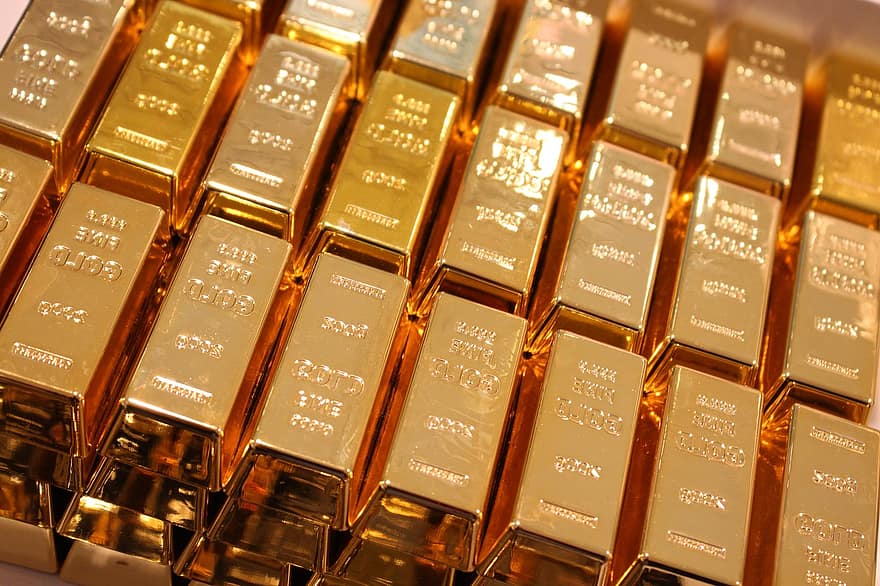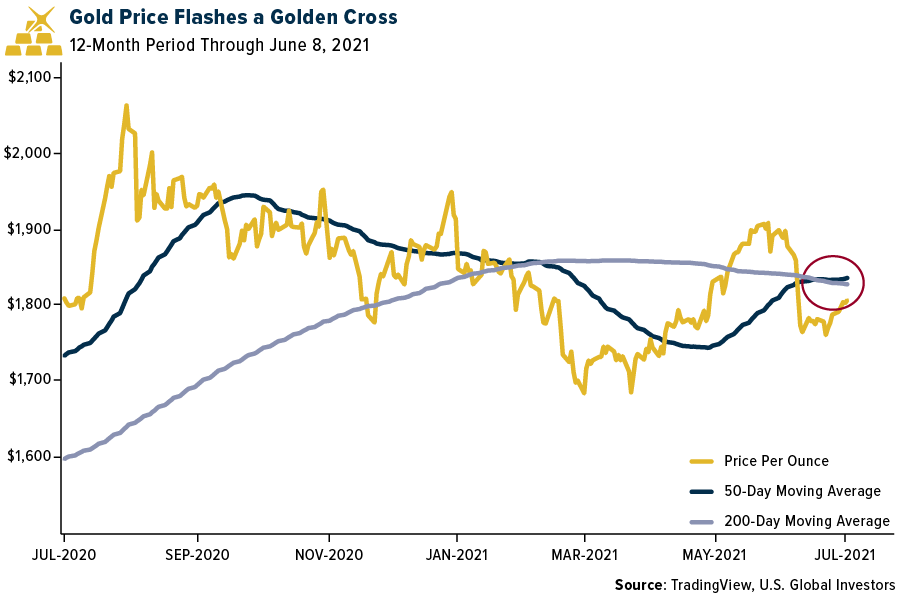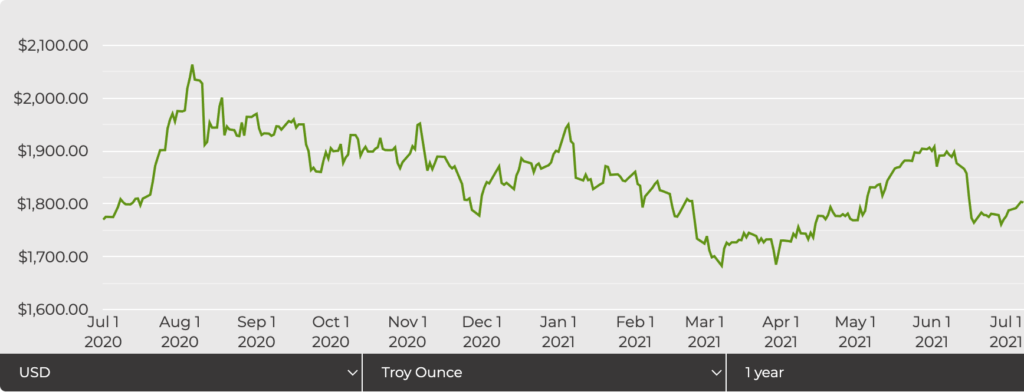
The gold price achieved a third consecutive week of increases as the yield on the 10-year Treasury dipped below 1.3% for the first time since February, writes US Global Investors CEO and CIO Frank Holmes in a blog post late last week.
Against a backdrop of increased infections in the US from the new Delta Covid 19 variant that threatens economic growth and rising uncertainty over the next interest rate hike, gold is now flashing a golden cross. This means the 50-day moving average is trading above the 200-day moving average.

In the past, this has been a bullish indicator of gold prices. According to Holmes, gold was still trading about 12% lower from its all-time high set last summer.
In the short to medium term, it appears as if gold demand will continue to be driven by central bank policy, which should remain accommodative even as inflation fears increase.
According to the CME Group’s FedWatch Tool, there’s a 75% probability that interest rates will stay in the 0.00% to 0.25% range a year from now, leaving plenty of time for gold to test $2,000 per oz. or more.
“I favour gold as a portfolio diversifier. Low bond yields have pushed investors into riskier assets, including stocks.
“This has been a winning strategy as major indices have been hitting all-time highs, but it’s important to maintain a position in gold to help manage risk. I recommend a 10% weighting, with 5% in physical gold and 5% in gold stocks.”
This week spot gold closed at $1,808.32, up $21.02 per oz, or 1.18%. As measured by the NYSE Arca Gold Miners Index, gold stocks ended the week lower by 0.12%.
CLICK HERE for an interactive gold price chart

Central banks from Serbia to Thailand have been adding to their gold holdings, writes Bloomberg this week, and Ghana recently announced plans for purchases as the spectre of accelerating inflation looms. A recovery in global trade provides the firepower to make purchases.
A rebound in buying, which had dropped to the lowest in a decade, would bolster the prospects for gold prices as some other sources of demand falter, reports Bloomberg.
The worst performing precious metal for the week was silver, down 1.39% after two consecutive weekly gains.
The worst performing precious metal for the week was silver, down 1.39% after two consecutive weekly gains. Bank of America lowered its 2021 silver price forecast 3.9% to $27.71 per oz. Despite this, they prefer silver due to the rising demand for solar panels and electrical applications.
The major market indices finished mixed this week. The Dow Jones Industrial Average gained 0.24%, and the S&P 500 Stock Index rose 0.43%. Meanwhile, the Nasdaq Composite climbed 0.43%, while the Russell 2000 small capitalization index lost 1.13% this week.
The S&P/TSX Venture Index came in off 3.09%. The 10-year Treasury bond yield fell six basis points to 1.36%.